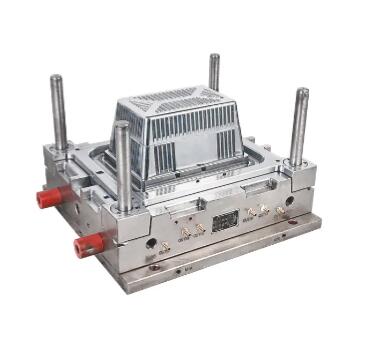
Composition and Manufacturing Process of Plastic Chair Molds
Plastic chairs are ubiquitous in homes, offices, and public spaces around the world. These lightweight, versatile, and cost-effective seating solutions owe their existence to the intricate craft of plastic chair mold production.
Composition of Plastic Chair Molds
Plastic chair molds are designed with several essential components, each contributing to their functionality and precision:
Cavity:
The cavity, also known as the mold cavity or die, is the primary part of the mold responsible for shaping the plastic chair. It is meticulously designed to match the exact dimensions and contours of the chair's seat, backrest, legs, and other features. The cavity is often made from high-quality steel, typically hardened to withstand the high pressures and temperatures during the molding process.
Core:
The core, also known as the mold core or mandrel, complements the cavity by creating spaces within the chair, such as hollow legs or openings in the backrest. The core is designed to fit precisely within the cavity, ensuring that the final chair has all the required features and details.
Injection Points:
Injection points or gates are strategically placed in the mold to allow the molten plastic to enter the cavity and core. The design and location of these gates are critical to achieving uniform plastic distribution and minimizing defects in the final product.
Cooling Channels:
To regulate the temperature of the mold during the injection process, cooling channels are integrated into the mold's structure. These channels help ensure that the plastic solidifies uniformly and that the mold can be used for multiple production cycles without overheating.
Ejector System:
After the plastic has cooled and solidified within the mold, an ejector system is used to push the molded chair out of the mold's cavity and core. This system typically includes ejector pins, sleeves, or plates.
Manufacturing Process of Plastic Chair Molds
The manufacturing process of plastic chair molds involves a series of meticulous steps, each essential for creating high-quality and precise molds:
Design and Blueprint:
The process begins with the careful design of the plastic chair mold. Using advanced computer-aided design (CAD) software, mold designers create a detailed blueprint that includes the chair's dimensions, features, and the mold's cavity and core specifications.
Material Selection:
High-quality steel is the preferred material for constructing plastic chair molds. The choice of steel alloy depends on factors such as the expected production volume and the specific plastic resin being used. Common choices include P20, H13, and S136 steel.
CNC Machining:
To create the precise components of the mold, computer numerically controlled (CNC) machines are used. These machines cut, shape, and mill the steel blocks into the cavity, core, and other mold components. This process demands a high level of precision and may take several days to complete.
Heat Treatment:
To improve the hardness and durability of the mold components, heat treatment processes like hardening, tempering, and stress relieving are applied. These processes ensure that the mold can withstand the high temperatures and pressures of the injection molding process.
Assembly:
The individual components of the mold, including the cavity, core, cooling channels, and ejector system, are carefully assembled. Skilled mold makers ensure that all components fit together perfectly to create a seamless mold.
Polishing and Finishing:
The mold's surfaces are meticulously polished to achieve a smooth finish, reducing the risk of imperfections on the plastic chair's surface. The polishing process may also include texturing to add specific patterns or textures to the chair's surface.
Installation and Testing:
Once the mold is completed, it is installed in an injection molding machine. The mold is rigorously tested to ensure that it functions correctly, with proper plastic distribution, cooling, and ejection. Any necessary adjustments are made to achieve optimal results.
Production:
With the mold successfully installed and tested, it is ready for large-scale production. The plastic resin is heated and injected into the mold, filling the cavity and core. After cooling and solidifying, the molded chair is ejected, and the process continues.
Quality Control:
Throughout the production process, quality control measures are implemented to check the molded chairs for defects, consistency in size and shape, and overall quality.

 English
English  русский
русский Español
Español






